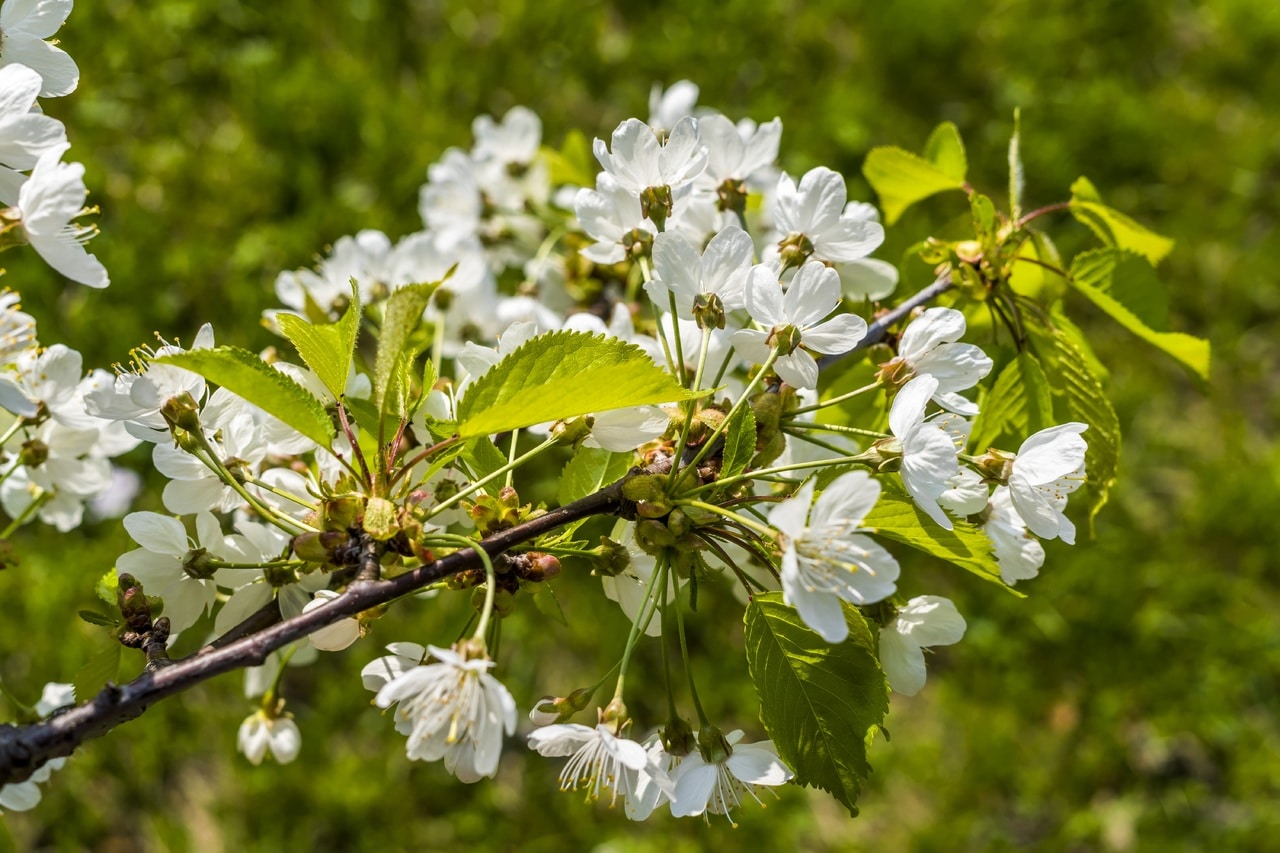

Would you like to be able to harvest a good amount of fruits in a short time? If so, don’t miss our list of 6 fast-growing fruit trees that can not be missing in your garden or orchard, since also, if you are looking for trees that provide shade, we suggest some very interesting ones.
All of them can be pruned in autumn or towards the end of winter to prevent them from growing too tall and, incidentally, to make it easier for you to pick the fruits. Discover them.
Almond


The almond tree, or Almondis a deciduous tree or small tree native to Asia that reaches a height of between 3 and 5 meters. It needs the soil to be fertile and well drained, growing smoothly in the limestone.
It supports drought, although it welcomes moderate watering during the summer. Resists cold and frost down to -7ºC.
get yours here!.
Brown


The chestnut tree, whose scientific name is castanea sativais a tree that reaches 30 meters in height. Originally from Europe and Asia, it is the largest producer of nuts in the world.
It likes temperate climates, where it grows in cool, well-drained soils. Supports up to -18ºC with hardly any damage.
cherry tree


The cherry tree, whose scientific name is Prunus aviumis a deciduous tree native to Asia. It grows up to 30 meters in heightwith a wide and pyramidal crown which is filled with white flowers in spring. The fruits are blackish-red drupes, with a slightly acid flavor.
It needs sun, a temperate climate and moderate watering. Resists up to -18ºC.
Citrus


Fruit trees of the genus Citrus, especially orange and lemon trees, are fast-growing plants that can be had in small gardens. They grow up to 6-7 meters on average, and since they have evergreen leaves, you can use them to shade a corner. They support light frosts.
Some examples are:
- Lemon Tree: it is a shrub or tree whose scientific name is Citrus x lemon which reaches a height of 4-5 meters. Its fruits as such are not edible, but the juice that is extracted from them is. This has an acid flavor, and is widely used both as a drink and to flavor different recipes, including those that have rice, such as paella. Resists up to -4ºC. Learn More.
- Tangerine: it is a little tree whose scientific name is Citrus reticulata which reaches a height of 4-5 meters. The fruits are similar to oranges, but smaller and with a milder flavor. Resists up to -4ºC.
- Orange: it is a tree whose scientific name is Citrus x sinensis It reaches a maximum height of 13 meters, although it is not allowed to exceed 5 meters. Produces fruits with the peel and orange segments. It resists frosts down to -4ºC. Learn More. Want one? Buy it.
- Pomelo: it is a little tree whose scientific name is citrus x paradise which reaches a height of 4-6 meters. It produces yellow to red fruits. It resists weak frosts down to -2ºC. Learn More.
Pomegranate


El pomegranatethe Pink garnetis a deciduous tree native to the Iranian-Turanian region that reaches a maximum height of 5 meters. It produces fruits called pomegranates whose seeds are edible.
It is thorny, so you must be careful with its handling. For the rest, you should put it in full sun and give it moderate watering. Withstands drought and frosts down to -7ºC.
Fig tree


La fig treethe loaded with figsis a shrub or small fruit tree native to the Mediterranean that does not exceed 6m in height. It produces fruits, figs, with a sweet taste. It grows in all types of soils, preferring those that are calcareous.
It withstands drought without problems, but to obtain a good harvest, it is recommended to give it regular waterings during the summer. Although it is very sensitive to cold, it easily resists frosts down to -4ºC.
Manzano


El manzano, whose scientific name is Malus domesticais a deciduous tree native to Asia that reaches a height of 4-5 meters. It produces fruits called pomos that are green, reddish, or yellow.
It grows in fertile and well-drained soils, but it is also important that the climate is temperate. It does not resist drought; instead, frosts down to -17ºC do not harm it.
Mulberry


Image – Flickr / mauro halpern
La Mulberry, belonging to the botanical genus Morus, is a tree that grows up to 15m tall. It is native to China, and it also has deciduous leaves.
This is a species that can be had both in temperate climates and those cooler, since supports up to -18ºC minimum and 38ºC maximum.
Medlar


El medlar, whose scientific name is Eriobotrya japonicais an evergreen tree native to southwestern China that grows up to 6-8 meters. Its fruits are pommel with orange skin and sweet or sour taste.
It needs moderate watering, sun and soils rich in organic matter. Resists up to -12ºC.
Olive


Image – Wikimedia / Burkhard Mücke
The olive tree is a relatively small fruit tree, which can also be pruned to make it even lower. It resists drought very well, and also mild frosts. click here! to buy one.
Which one did you like the most? Do you know more dwarf fruit trees that have rapid growth?

